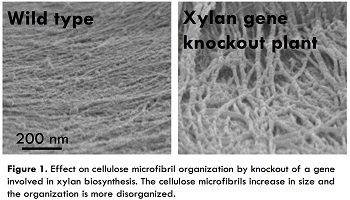
Jacob K Jensen
Michigan State University, USA
Title: Genetic manipulation of the cell wall hemicellulose component as a route to improved feedstock materials for biofuels production
Biography
Biography: Jacob K Jensen
Abstract
Biomass recalcitrance is one of the major impediments to the success of biofuels. High recalcitrance requires extended pretreatment procedures, high enzyme loading and extended digestion conditions, each adding to overall production cost. The biomass feedstock consists of approximately equal amounts of cellulose, lignin and hemicellulose, the latter consisting of a range
of more complex polysaccharide species that play important roles in cellulose deposition and organization. In this work, we are exploring two principles for achieving improved feedstock materials based on genetically manipulating hemicellulose production in the plant material: (1) The effects of the hemicellulose component on cellulose microfibril organization and hence on overall biomass recalcitrance, and (2) the overproduction and deposition of an easily degradable hemicellulose to improve biomass glucose yields. In one study, we manipulate xylan formation during secondary cell wall formation and document altered cellulose microfilbril organization and improved enzymatically digestibility as a consequence. Some of these have the advantage of being genetically dominant, stackable with other favorable biomass traits and having a minimal impact on plant growth and physiology. A second line
of research involves over production of mixed-linked glucan, an all glucose cell wall polymer, in grass stem pith cells. In this case, the hemicellulose functions as storage compound for fixed carbon, a mechanism that seems to already be in place in the plant. Mixedlinked glucan is highly soluble and easily enzymatically degradable. By increasing the carbon storages in this form, more glucose is released under milder processing conditions.


